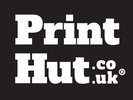The simplest forms of printing have been around for hundreds of years, but nowadays there are many several different printing processes thanks to advances in technology. Different printing processes are all used for different reasons, for example when a certain level of quality is required and cost restrictions.
The printing process has been being developed for hundreds of years
The main types of printing are as follows-
Letterpress Printing– Created back in 1440 by Johannes Gutenberg, Letterpress printing is a form of relief printing that involves using a letterpress and a platen press. The text is placed and locked on to the ‘bed’ of the chase and then the paper is pressed on top of it to create the impression. This method includes other forms of relief printing such has the use of photo-etched zinc plates, wood engravings and linoleum blocks and for a long time was the most commonly used form of printing.
Screen printing– Originally a method of printing on silk, nowadays this method is used for many different types of material including nylon, Dacron and even stainless steel. Using a stencil pattern, ink is forced through a screen to create an impression. This method is typically used for printing t-shirts, fabric signs, truck signs and decals.
Engraving– This method gives an extremely sharp and precise result. It involves using steel dies that are cut or chemically etched to hold the ink then the paper is forced against the plates, which engraves the paper and leaves an embossed result.
Thermography– Thermography gives a very similar result to engraving but is much cheaper as it doesn’t require a die. Instead, a special powder is used which adheres to the dye and gives a raised impression. This is a more cost-effective method if you want the engraved effect but need it to be produced on a large scale.
Offset lithography– This is now the most common method of printing and is performed by most commercial printers. Depending on several different factors such as the size of the job, the paper being used, desired format and quantity, the paper is run through a web press or sheets of paper are run through sheet-fed presses. The ink is transferred from metal plates to a rubber blanket or cylinder, then pressed onto the paper.
Gravure printing– This is the high-speed method of producing millions of copies of text using huge machines and is the method used for newspapers, magazines and catalogues as well as wrapping paper, wallpaper and even other materials such as upholstery fabric and plastic laminates.
Flexography– Generally used for packaging products like carrier bags, cardboard boxes and food labels, this is a type of relief printing that uses flexible rubber or photopolymer plates to create an impression.
Digital printing– This is very widely used considering how new it is and has a very fast turnaround. You select exactly what you want to print, how you want it to look and the quantity and it is produced using either ink-jet technology or toner, like a photocopier. It is precise and produces very little waste.
Variable Data Printing– This is a type of digital printing that allows you to alter every impression as needed. You can alter words, images or both so you can completely personalise each copy.
It’s surprising how flexible and limitless today’s printing really can be.
